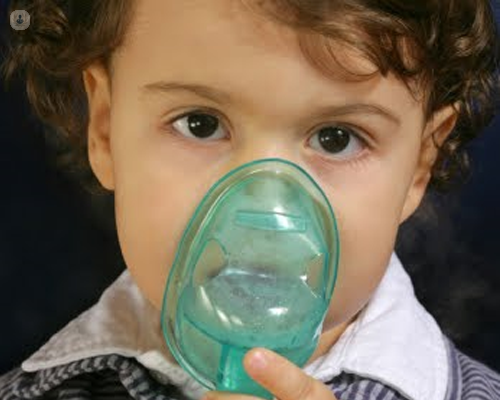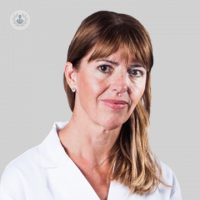Living with childhood asthma and how to address it
Written by:Childhood asthma is the most common chronic disease in children in developed countries. Asthma is manifested by the presence of recurrent episodes of shortness of breath, coughing, wheezing audible (wheezing in the chest, usually known as whistling in the chest) and chest tightness.

Often parents of children with wheezing in early life ask the pediatrician and expert in child allergology : "Is my asthmatic son? What will remain higher? ". Sometimes the answer is not simple, but keep in mind that up to 50% of children wheeze in the first year of life, although only 20% showed symptoms at later ages.
Risk factors for developing asthma
Asthma results from the interaction of genetic factors with multiple environmental factors, among which breastfeeding, the presence of allergens, passive exposure to snuff, pollution, respiratory infections and obesity. Atopy (predisposition to become sensitized to allergens) is the most important risk factor in children to present asthma. In fact, children with allergies to cow's milk and especially the egg, have a much higher prevalence of childhood asthma.
In multiple studies in asthmatic children they have attempted to identify different subgroups of children with asthma and with different characteristics, in order to know the outcome of it at later ages.
In general, children with symptoms earlier onset during the first year of life, often have a tendency to remission of asthma in later ages. When asthma symptoms appear at later ages and especially in children with presence of allergen sensitization (allergic) a tendency to persistent asthma symptoms observed in later ages.
Can you make a normal life an asthmatic child?
The most important goal of asthma treatment is that the child perform a normal life, which includes performing sport, attendance at camps, travel ... In fact, it is advisable in any asthmatic child practice sport, and only should be avoided during periods of flare-ups.
Diagnosis of childhood asthma
In younger children the diagnosis of asthma is clinical and is done through the assessment of symptoms and clinical examination.
In children older than five years or longer, testing lung function is very useful for diagnosis. Measurement of inflammatory markers airway, such as exhaled nitric oxide, is also useful in monitoring asthma.
The allergy study is very important to know the cause of asthma, especially in children over three years, as it is at this age when children usually show sensitization to inhaled allergens.
Treatment of childhood asthma
There are different ways to address childhood asthma:1) Preventive measuresAs far as possible, avoid allergens and other triggers of asthma, although in most cases, it is difficult to achieve. It has been shown that in those allergic to dust mites, despite performing strict avoidance measures children efficacy thereof is limited. So does exposure to fungi and animal dander because they are ubiquitous in our environment.
2) Drug TherapyThere are two groups of drugs: the maintenance, controlling inflammation, and rescue. Both groups of drugs are well tolerated, with few side effects.
Maintenance drugs are inhaled corticosteroids and leukotriene antagonists. Rescue medications are bronchodilators, being the most used salbutamol and are the treatment of first - line relief. They are usually used to demand. Inhalants with inhalation chambers is preferable for bronchodilators and inhaled corticosteroids.
3) ImmunotherapyIt is the only treatment that modifies the course of allergic asthma, ie, that can produce definitive remission of respiratory symptoms. Consideration should be given to those children whose symptoms are clearly related to the relevant allergen in the allergy study.
4) Health educationIt has demonstrated the usefulness of health education programs, which should be taught both parents and, by age, also the children themselves, as has been observed to reduce the risk of exacerbations, the days of truancy, visits emergency room, etc.. Caregivers, teachers, coaches and others who are in contact with the asthmatic child should also be trained to recognize and manage crises rescue medication when appropriate.
Edited by Patricia Crespo Pujante


